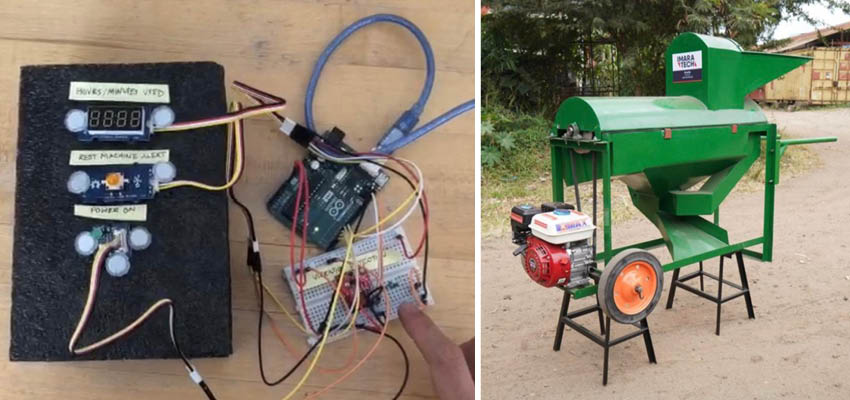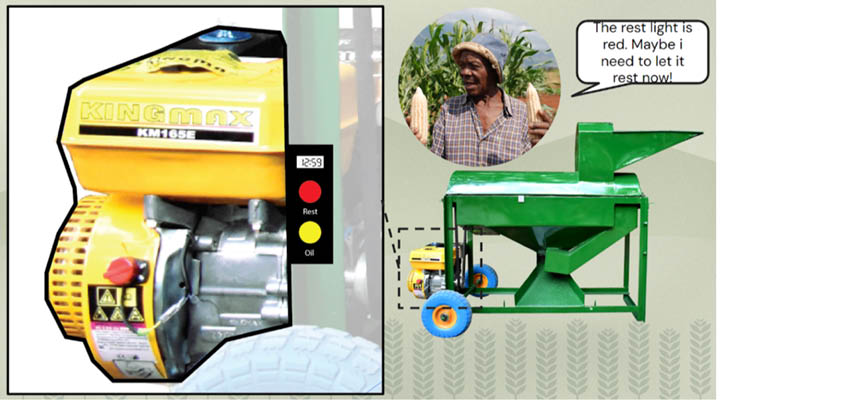
Archetyping a monitoring device that tracks acceleration and prevents engine degradation within Imara Tech’s wheat threshing machines in Tanzania.
MIT D-Lab class
Student team
MIT students unless otherwise noted.
- Maya Lu-Heda ‘25 (Wellesley)
- Dominic Lim Co - SM Dual Degree candidate in Computer Science and Computational Design
Community partners
- Herrieth Mkiramweni and Alfred Chengula
Twende
- John Rexford
Country
Arusha, Tanzania
Project background
Threshing is the process of separating grains from their husks and straw, and is essential for preparing crops like rice, wheat, and maize. In Tanzania, efficient threshing is crucial as it increases productivity, enhances crop quality, and boosts income for smallholder farmers. While this process can be done manually, mechanical threshers speed up the process and ensure clean, undamaged grains that fetch better market prices. This efficiency not only improves harvest quantities but also reduces labor intensity. It allows farmers to focus on other vital agricultural activities and ultimately, contributes to overall economic stability and poverty reduction.
The challenge
Imara Tech a Tanzanian start-up co-founded by MIT alum Elliot Avila is bringing thresher mechanization (a project originally started in a D-Lab class more than a decade ago) to smallholder farmers in rural communities by renting out their Multi-Crop Thresher (MCT) as needed. Currently, Imara Tech is facing a problem with their farmers not properly maintaining the thresher. On average, farmers have been running their machines for 12 to 15 hours straight, when they should allow the machine to rest every 4 hours. Moreover, they often forget to change the oil every 50 hours, leading to further engine degradation.
The solution
Our team aims to encourage farmers to regularly maintain their threshers by creating a monitoring device that would:
- Encourage farmers to remember to let their machines rest
- Notify Imara Tech of potential engine failure early on
- Create transparency regarding usage patterns to prevent any disputes
Working closely with Imara Tech and farmers, we hope to achieve these three goals by developing a low-tech monitoring device that tracks and monitors the duration of thresher usage by direct connection to the engine’s power supply and analyzing the vibration of the engine through FFT to detect and predict potential engine issues. Our next steps involve close work with Imara to streamline the device and to determine vibration levels that would inform Imara of potential issues.
Through this project, we hope to help further ImaraTech’s mission to improve agricultural efficiency and accessibility across Tanzania.

Contact
Heewon Lee, MIT D-Lab Lecturer and Research Associate

